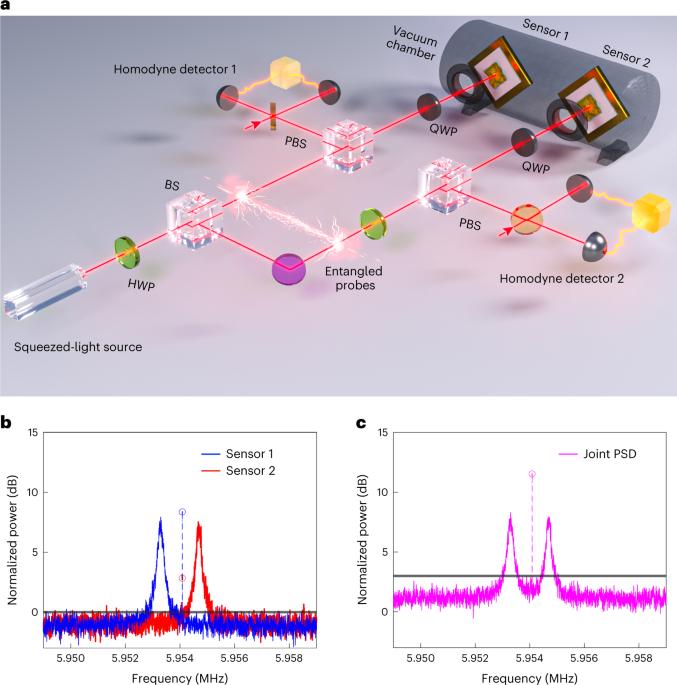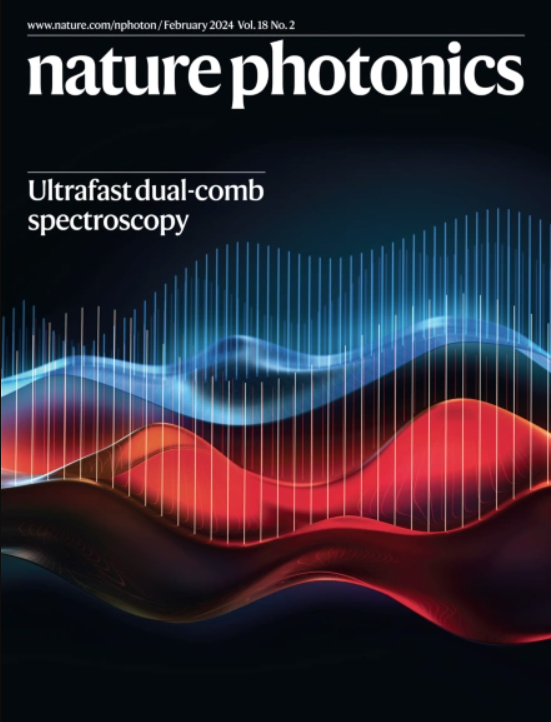Entanglement-enhanced optomechanical sensing
IF 32.9
1区 物理与天体物理
Q1 OPTICS
引用次数: 10
Abstract
Optomechanical systems have been exploited in ultrasensitive measurements of force, acceleration and magnetic fields. The fundamental limits for optomechanical sensing have been extensively studied and now well understood—the intrinsic uncertainties of the bosonic optical and mechanical modes, together with backaction noise arising from interactions between the two, dictate the standard quantum limit. Advanced techniques based on non-classical probes, in situ ponderomotive squeezed light and backaction-evading measurements have been developed to overcome the standard quantum limit for individual optomechanical sensors. An alternative, conceptually simpler approach to enhance optomechanical sensing rests on joint measurements taken by multiple sensors. In this configuration, a pathway to overcome the fundamental limits in joint measurements has not been explored. Here we demonstrate that joint force measurements taken with entangled probes on multiple optomechanical sensors can improve the bandwidth in the thermal-noise-dominant regime or the sensitivity in the shot-noise-dominant regime. Moreover, we quantify the overall performance of entangled probes with the sensitivity–bandwidth product and observe a 25% increase compared with that of classical probes. The demonstrated entanglement-enhanced optomechanical sensors would enable new capabilities for inertial navigation, acoustic imaging and searches for new physics. Joint force measurements with entangled optical probes on two optomechanical sensors are demonstrated. The force sensitivity is improved by 40% in the shot-noise-dominant regime. The sensing bandwidth is improved by 20% in the thermal noise limit.

缠结增强光机械传感
光机械系统已被用于力、加速度和磁场的超灵敏测量。我们对光机械传感的基本极限进行了广泛的研究,现在对其有了很好的理解--玻色光学和机械模式的内在不确定性,加上两者之间相互作用产生的反作用噪声,决定了标准量子极限。为了克服单个光机械传感器的标准量子极限,我们开发了基于非经典探针、原位思索挤压光和反作用衰减测量的先进技术。另一种概念上更简单的增强光机械传感的方法是由多个传感器进行联合测量。在这种配置中,克服关节测量基本限制的途径尚未得到探索。在这里,我们证明了在多个光机械传感器上使用纠缠探针进行联合力测量,可以提高热噪声主导机制下的带宽或射击噪声主导机制下的灵敏度。此外,我们用灵敏度-带宽乘积量化了纠缠探针的整体性能,发现与经典探针相比,纠缠探针的性能提高了 25%。所展示的纠缠增强型光机械传感器将为惯性导航、声学成像和新物理搜索带来新的能力。演示了在两个光机械传感器上使用纠缠光学探针进行联合力测量。在射击噪声占主导地位的情况下,力灵敏度提高了 40%。在热噪声极限下,传感带宽提高了 20%。
本文章由计算机程序翻译,如有差异,请以英文原文为准。
求助全文
约1分钟内获得全文
求助全文
来源期刊

Nature Photonics
物理-光学
CiteScore
54.20
自引率
1.70%
发文量
158
审稿时长
12 months
期刊介绍:
Nature Photonics is a monthly journal dedicated to the scientific study and application of light, known as Photonics. It publishes top-quality, peer-reviewed research across all areas of light generation, manipulation, and detection.
The journal encompasses research into the fundamental properties of light and its interactions with matter, as well as the latest developments in optoelectronic devices and emerging photonics applications. Topics covered include lasers, LEDs, imaging, detectors, optoelectronic devices, quantum optics, biophotonics, optical data storage, spectroscopy, fiber optics, solar energy, displays, terahertz technology, nonlinear optics, plasmonics, nanophotonics, and X-rays.
In addition to research papers and review articles summarizing scientific findings in optoelectronics, Nature Photonics also features News and Views pieces and research highlights. It uniquely includes articles on the business aspects of the industry, such as technology commercialization and market analysis, offering a comprehensive perspective on the field.
 求助内容:
求助内容: 应助结果提醒方式:
应助结果提醒方式:


